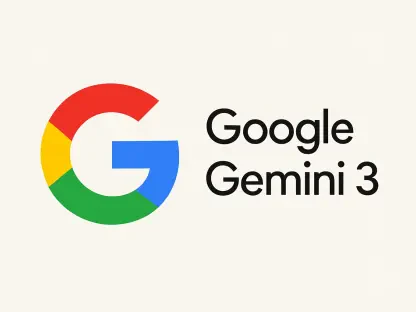In today’s fast-paced digital landscape, traditional SEO practices alone aren’t sufficient to ensure top rankings. Marketers have started leveraging insights from competitors to drive strategies that accelerate rankings and enhance online visibility. By viewing competitors as extensions of a team rather than adversaries, these insights can be harnessed to refine approaches effectively and elevate a site’s performance.
The Role of Competitor Analysis in Modern SEO
Rethinking Competitors
In the current hyper-competitive online environment, merely perceiving competitors as threats is an outdated notion. Instead, understanding and analyzing their strategies offers a significant opportunity for growth and refinement. Competitor analysis enables marketers to dissect and interpret the data that competitors generate through SERP performance, giving a comprehensive view of what works and what doesn’t. Emulating successful tactics while avoiding common pitfalls becomes possible, thus forming a robust and refined SEO strategy.
The SERP data generated by competitors is a treasure trove of actionable insights. By examining their keyword targets, backlink profiles, and content strategies, it becomes easier to pinpoint areas where they succeed and where they falter. This shift in perspective transforms competitors into indirect collaborators, whose successes and failures become critical pieces of a broader strategic puzzle. Consequently, this approach allows businesses to optimize their own SEO strategies, effectively turning competition into an invaluable resource.
AI Integration in SEO
Artificial Intelligence (AI) has revolutionized digital marketing, providing marketers with unprecedented tools to analyze vast data sets and optimize content production rapidly. Machine learning algorithms can process extensive amounts of data to identify trends, patterns, and anomalies far quicker than human analysis. AI-driven SEO tools now facilitate the creation of content that not only meets search engine requirements but also aligns closely with user intent and search behavior.
Integration of AI in SEO extends beyond speed and efficiency; it enhances precision and depth of analysis. Natural language processing models, like ChatGPT, help generate relevant and engaging content. Yet, it’s not just about volume but quality and relevance as well. Intelligent algorithms assess user engagement metrics, bounce rates, and conversion rates to recalibrate SEO strategies dynamically. As a result, businesses can consistently align their content with evolving search engine algorithms and user expectations.
Google’s Shifting Evaluation Criteria
Google’s evolving algorithms have become more sophisticated, prioritizing entity relationships and user experience over isolated keywords. This shift necessitates a recalibration of SEO strategies to focus on entity maps and search intent. Google’s algorithm now interprets the context and relationships between different entities within the content, rather than just keyword density. This means content must be rich in context, providing comprehensive answers to user queries.
Understanding and leveraging entity-based SEO requires a deep dive into how Google constructs these relationships within its indexing framework. Entities are essentially topics or concepts that are interconnected, forming a web of relevance. By optimizing content to fit into these entity maps, businesses can boost their relevance and authority in the eyes of Google. Additionally, focusing on user experience metrics such as page load time, mobile-friendliness, and overall site usability further aligns with Google’s current evaluation criteria. Adapting to these changes ensures better rankings and sustained visibility.
Harnessing AI for SEO Insights
Spotting Gaps with AI
AI tools are indispensable in modern SEO for identifying underperforming areas swiftly. These tools can sift through vast amounts of data, pinpointing gaps in both SEO and PPC efforts that may otherwise remain unnoticed through manual analysis. For example, AI can detect keywords that competitors rank for but are missing in a business’s strategy. This capability to quickly spot deficiencies helps businesses uncover new opportunities for optimization and growth.
Automated AI tools like SEMrush or Ahrefs provide detailed reports on keyword performance, backlink profiles, and competitive position. This actionable data allows marketers to make informed decisions about where to focus their efforts, whether it’s refining on-page SEO, adjusting PPC campaigns, or enhancing content strategies. Furthermore, AI-enabled platforms can offer predictive analytics, suggesting future trends and opportunities based on historical data. This predictive capability ensures that SEO strategies are not just reactive but proactively positioned for future success, capitalizing on emerging trends ahead of the competition.
User Behavior Analysis
Understanding how users interact with competitors’ websites is crucial for improving a site’s own conversion rates and user experience. Metrics such as Job To Be Done (JTBD) keywords play a vital role in this analysis, revealing the specific needs that drive user searches. By incorporating these insights, businesses can tailor their content and services to better fulfill user intent, thereby boosting engagement and conversion rates.
User behavior analysis goes beyond surface metrics like page views. It dives deep into engagement patterns, bounce rates, and click-through paths to paint a complete picture of how users engage with content. Tools like heatmaps and session recording software provide visual insights into user interactions. Additionally, social listening tools can track and analyze user conversations across platforms, offering a broader understanding of market sentiment and emerging user needs. By thoroughly analyzing these behavior patterns, businesses can optimize their site structure, content delivery, and overall user experience to align more closely with user preferences and expectations.
Methods for Advanced Competitor Analysis
Entities and relationships now shape Google’s algorithms, making it essential for businesses to understand these dynamics to gain a comprehensive view of the competitive landscape. Advanced competitor analysis methods leverage AI to map these entities and relationships, thereby providing deeper insights than traditional keyword-focused approaches. AI-powered tools can automate this analysis, offering real-time, actionable insights without continuous manual tracking.
Tools like SEMrush’s position tracking feature allow businesses to monitor competitors’ strategic moves and react promptly to ranking changes. Automated alerts for sudden shifts in competitor rankings can highlight new tactics and strategies that might be worth emulating. Moreover, these tools can decode complex patterns in competitor backlink profiles, uncovering opportunities for similar or more strategic link-building efforts. This real-time analysis ensures that businesses can maintain a competitive edge by swiftly adapting to changes in the SEO landscape and capitalizing on new opportunities as they arise.
Going Beyond Keywords
Reverse-Engineering Competitor Success
Analyzing rivals’ overall strategies is more crucial than merely focusing on targeted keywords. This involves understanding the content clusters, the way information is presented, and their engagement tactics. Reverse-engineering competitor success helps to uncover comprehensive insights that can be adapted to improve one’s own SEO strategy substantively.
Reverse-engineering begins with a thorough audit of competitors’ websites, dissecting their approach to content marketing, backlink generation, and technical SEO. Tools that provide historical data on competitors’ strategies, including content updates and SEO adjustments, prove invaluable. By mimicking effective aspects of their strategies while introducing unique elements, businesses can create a differentiated and compelling approach. This strategic imitation—coupled with innovation—ensures that a site’s SEO tactics aren’t just robust but adaptive to nuanced market trends.
Omnichannel Integration
Achieving modern SEO success increasingly relies on adopting an omnichannel approach. Integrating data from various platforms, such as Google Analytics, social media, and PPC campaigns, provides a cohesive strategy that informs decision-making across digital touchpoints. This integration ensures that SEO tactics are consistent and reinforced across all channels.
Omnichannel integration involves harmonizing insights from diverse platforms to create a unified strategy. For instance, data from social media interactions can provide immediate feedback on content effectiveness, while PPC performance metrics can highlight high-conversion keywords and user behaviors. Consolidating this data through centralized dashboards enables holistic analysis, facilitating strategic adjustments that resonate across all platforms. The synergy of omnichannel insights not only enhances the accuracy of SEO decisions but also drives a consistent message that boosts overall visibility and engagement.
Innovating with Content Strategy
Unique Content Angles
Staying competitive in the digital marketing space requires businesses to consistently develop innovative content strategies. Exploring underutilized formats and unique content angles that resonate with target audiences can set businesses apart. Creativity in content creation—whether it’s through interactive media, infographics, or engaging videos—holds the key to maintaining user interest and driving sustained engagement.
Leveraging insights from competitor analysis can guide the development of these unique content angles. By identifying gaps in competitors’ strategies—areas where they might fall short—businesses can exploit these voids to provide value, attracting and retaining users. Innovative content that addresses unanswered questions, offers fresh perspectives, or utilizes novel formats can significantly enhance user engagement. Moreover, experimenting with content types and continuously measuring their impact assures that the content strategy remains dynamic and adaptable.
Engagement Insights
Social listening and deep analysis of user engagement are vital for identifying content gaps that competitors may have overlooked. Understanding what drives user interaction on social media and related platforms can reveal untapped opportunities for content creation. This continuous engagement analysis ensures content remains relevant and aligned with user interests.
Engagement insights can be derived from analyzing metrics like comments, shares, and overall user sentiment. Tools specifically designed for social listening can track mentions, hashtags, and keyword trends across platforms. By using these insights, businesses can tailor their content to address the evolving needs and preferences of their audience. Engaging directly with users through feedback mechanisms, polls, and interactive content further refines and personalizes the content strategy. Addressing content gaps while ensuring ongoing user engagement enhances both visibility and user satisfaction.
Maintaining Ethical Standards
Best Practices
Competitor analysis should be systematic and consistent, adhering to best practices that ensure ethical research methods. This involves using tools and techniques that provide accurate data while avoiding any manipulative tactics. Maintaining ethical standards is crucial for reliability and long-term success in SEO efforts.
Best practices in competitor analysis ensure that the research is comprehensive yet ethical. It’s vital to use respected tools that adhere to industry standards, avoiding any tactics that might unfairly exploit or harm competitors. This diligence in ethical practices also includes transparency in reporting findings and strategies. By sticking to best practices, businesses not only maintain integrity but also ensure that the insights derived are credible and applicable in refining their own SEO strategies.
Ethical Considerations
In today’s fast-paced digital landscape, traditional SEO practices alone aren’t enough to guarantee top rankings. Marketers now recognize the value of incorporating insights gained from competitors to enhance their strategies. This approach not only accelerates rankings but also boosts online visibility. By viewing competitors not as adversaries, but as extensions of their team, marketers can harness valuable insights to refine their methods effectively. Analyzing competitors provides a wealth of knowledge that can be strategically used to improve a site’s performance.
Rather than merely focusing on one’s own SEO tactics, observing competitors can highlight trends, spot weaknesses, and identify opportunities for growth. For instance, understanding which keywords competitors target, their content marketing strategies, and backlink profiles can offer critical guidance. These insights reveal areas where one can outperform the competition or adopt new techniques.
Furthermore, competitive analysis encourages continual learning and adaptation, ensuring strategies remain dynamic in the ever-evolving digital terrain. By integrating competitors’ best practices and avoiding their pitfalls, marketers can drive their campaigns to greater success. Adopting this collaborative yet competitive mindset transforms rivals into resourceful guides in the journey of achieving superior online presence and rankings.









